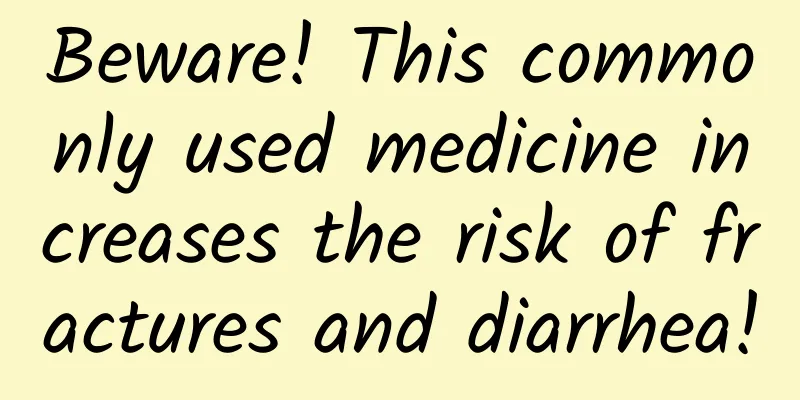Could this thing that we use every day really cause cancer?

|
This article was reviewed by Chu Yuhao, PhD from Beijing University of Chemical Technology, engineer at Sinopec Beijing Research Institute of Chemical Industry Plastic bottles are found in almost every household. In addition to saving and selling These plastic bottles It is often used for "waste utilization" For example, it can be used to pack cooking oil, grains, etc. But do you know? If plastic bottles are not stored properly or used for too long It is very likely to produce substances that are harmful to the human body Damage to health Can improper use of plastic bottles cause cancer? Many friends say that plastic bottles marked with "1" on the bottom are disposable. If reused, the plasticizers contained in them will easily precipitate, causing DNA mutations in the body and even increasing the risk of certain cancers. Copyright image, no permission to reprint In fact, the "triangle + number" logo is a logo code for plastic types developed by the American Plastics Industry Association. It can make plastic types easy to identify and significantly reduce recycling costs. Generally, the bottom of a transparent mineral water bottle will be marked with "1". Its main material is "PET", and the full name is "polyethylene terephthalate". This material can generally withstand heat up to about 70°C, and the usage conditions are generally around -20°C to 70°C. It is not recommended to use this plastic bottle excessively and repeatedly, and it is best to use it once or twice and not use it again. However, many families like to use it to hold cooking oil, seasonings, etc., and place it next to the stove, where the temperature is relatively high, which may pose a health hazard. Plasticizers are what we often call plasticizers in our daily lives. They are added to hard plastics mainly to increase elasticity and durability. The most commonly used plasticizer is "phthalate esters (DEHP)". As for plasticizers, as long as they comply with the regulations of various countries around the world on the usage, residue and migration of plasticizers, they are allowed to be used in the production of food packaging materials. Copyright image, no permission to reprint So, are plasticizers carcinogenic? The Cancer Research Center under the World Health Organization has classified "DEHP" as a Class 2B carcinogen. "Class 2B carcinogens" mainly refer to "substances that may be carcinogenic to humans but with limited or insufficient evidence." Although plasticizers such as DEHP may migrate from some plastic products into food and eventually enter the human body under certain conditions, the use of DEHP in food packaging is strictly limited, and the amount of DEHP that migrates does not reach a dose that is harmful to the human body. In addition, there is insufficient evidence that it is carcinogenic to the human body. Therefore, "plasticizers cause cancer" still needs to be viewed scientifically. One table to understand plastic products There are seven types of commonly used plastics, which are found in the following items. Among them, plastic products marked with 1, 2, 4, and 5 are safer. Rules for safe use of plastic products 1. Mineral water bottle: can be used to store oil, but not for long-term use Many people use mineral water bottles as versatile containers to store wine, oil, etc. ● Plastic bottles for storing oil are not too dangerous, but they should not be placed in overheated places, such as near stoves, and they need to be replaced regularly. ● It can be used to temporarily store cooking oil, seasonings, etc., but it is not suitable for long-term use and should not be used frequently. 2. Plastic containers: Choose those without odor and black spots When buying plastic containers and other products, smell them to see if there is a burnt smell and check if there are any burnt spots. If there are, it can be basically confirmed that they are made of recycled waste, especially food packaging that comes into contact with food or the human body, so try to use less. Try to choose larger brands. 3. Plastic bags: choose those with smooth surface and crisp sound There are two most common materials for daily plastic bags, namely PVC (No. 3) and PE (No. 4). ● PVC (No. 3): It feels sticky and astringent to the touch, and makes a small, muffled sound when shaken by hand. Try to avoid contact with food. ● PE (No. 4): It feels smooth and tough, makes a crisp sound when shaken, and is safe for contact with all kinds of food, but is not suitable for high-temperature heating, such as hot water or microwave ovens. Copyright image, no permission to reprint 4. Try to avoid heating Take-away boxes and lunch boxes are very commonly used in daily life, and there are two main types of materials. ● Expanded polystyrene (No. 6): Poor heat resistance and cannot be heated. ● Polypropylene (No. 5): The lunch box is thin and transparent and can be heated in a microwave oven. However, it is difficult for ordinary consumers to distinguish between these two types of lunch boxes, and it is recommended not to heat them in the microwave. Rules for safe use of plastic products 1. Mineral water bottles: can be used to hold oil, but should not be placed in overheated places, such as near stoves. They need to be replaced regularly and should not be used to hold wine. 2. Plastic containers: Choose those without odor and black spots. 3. Plastic bags: choose those with smooth surface and crisp sound. 4. Lunch boxes and take-out boxes: try to avoid heating. Source: Global Science Original link: https://www.quantamagazine.org/reasons-revealed-for-the-brains-elastic-sense-of-time-20200924/ The cover and watermarked pictures of this article are from the copyright gallery. The pictures are not authorized for reprinting. |
<<: Why does "couple cancer" occur? The "killer" behind it is ignored by many people
>>: Worried about the risk of sudden death? How can people in the workplace stay healthy?
Recommend
IC Insights: Capital expenditures for the entire semiconductor industry are forecast to be around $146.6 billion in 2023, down 19% year-on-year
Memory chip manufacturers, including Micron and S...
Bidding promotion plan for the wedding photography industry!
1. Overview of the wedding photography industry b...
The risk of cancer is more than 10% higher, and it is even more serious for those with cardiovascular disease. Obese people should pay attention!
Only those who are losing weight can understand t...
How important is it to upgrade the firmware to improve the performance of SSD solid state drives?
Nowadays, SSD is becoming more and more popular, a...
Automatic platform for re-trading old projects, with unlimited daily income
Old project replay automatic hanging platform, si...
Vsync signal mechanism and UI refresh process
[[439732]] Preface The screen refresh frame rate ...
There is no cola and milk tea, but the cold drinks of the ancients are richer than you think
Summer is coming with heat waves Various iced dri...
Modularity and AR phones: Did Lenovo bet on the right trend?
Not long ago, Lenovo held the Tech World Technolo...
Everyone is cheering for NIO, but will you pay for it?
Just yesterday, NIO released its first mass-produc...
Reminiscence! Translating “software” into “软件” was his masterpiece
Author: Hu Minqi He is a pioneer and trailblazer ...
How to layout the information flow landing page? 3 tips to help you retain customers~~
In an information flow advertisement , the role o...
How to fine-tune the operation of product lists on e-commerce platforms?
We can see various product lists on major e-comme...
Peking University Energy Research Institute: Path and policy for carbon emissions peak in the power sector
my country has proposed to strive to peak carbon ...
How does Baodao Glasses manage user operations?
The company I’m going to dissect for you today is...









